- Rangi Parker 1
- National Treasure 2
- Rangi Parker 2
- Rangi Parker 3
- Rangi Parker 4
- Rangi Parker 5
- Rangi Parker 6
- Rangi Parker 7
- Rangi Parker 8
- Rangi Parker 9
- Rangi Parker 10
| Temple Square is always beautiful in the springtime. Gardeners work to prepare the ground for General Conference. © 2012 Intellectual Reserve, Inc. All rights reserved. | 1 / 2 |
This story appears here courtesy of TheChurchNews.com. It is not for use by other media.
By Rachel Sterzer Gibson, Church News
In 1996, native New Zealander Rangi Parker sat in the Alpine, Utah, home of Paul Mendenhall, who had served as both a young missionary and mission president in her beloved homeland, and video recorded his testimony. In fluent Maori — a chanting, poetic language — Mendenhall shared his love for the gospel of Jesus Christ.
More than 20 years later, a man entered the Matthew Cowley Pacific Church History Center in Temple View, New Zealand, and began looking at an exhibit. He was approached by one of the senior missionaries who serves there, Elder Alan D. Thacker: “Hello, who are you? Where you from?”
“The man seemed angry and defensive,” said Elder Barry Garlick, director of the center, recalling the experience.
Elder Thacker perceived that the man had a great interest in Maori culture and felt impressed to take him up to the museum. Instead of taking him on a sequential tour, Elder Thacker escorted him straight into the third room of the museum where they watched the clip of Mendenhall offering his testimony in Maori.
“It was a powerful, powerful experience for this man to hear that testimony in his Maori tongue that he loved so much, given by Elder Mendenhall, who had passed away a few days before in Utah. His testimony was living on, and it was vibrant,” Elder Garlick said. The man left with a much different demeanor.

Rangi Parker 7
Elder Paul Mendenhall on his mission to New Zealand in the 1940s. Photo courtesy of Rangi Parker, courtesy of Church News. All rights reserved.This was just one example of how a special work is happening in a special place in Temple View, a community nestled in the valley below the Hamilton New Zealand Temple.
For 35 years, Rangi Parker, with the help and support of her husband, Vic Parker, has been collecting and gathering the journals, photographs, recordings and memorabilia of missionaries who have served in Aotearoa, the Maori name for New Zealand. In doing so, she has also amassed an impressive history of their people.
Her work has not gone unnoticed. In 2008, she was nominated by a member of the New Zealand Parliament and awarded the Queen’s Service Medal. Through the years, she has also been featured in documentaries aired on New Zealand national television and featured in many articles, including the Church News and “Ensign” magazine.
“We’ve just had the most wonderful journey over the past 30 years,” Rangi Parker said of gathering the collection.
“A rich and rewarding journey for us,” her husband added. “We’re just happy to get it out there for others to see and to share it with others.”
It’s now been several years since the collection — known as the Kia Ngawari Trust — was acquired by the Church, largely cataloged and digitized, and taken to a permanent home at the Matthew Cowley Pacific Church History Center and Museum.
Both Rangi and Vic Parker know from experience how the histories and testimonies they have collected, like that of Mendenhall, have the ability to bless the lives of people throughout the Pacific.
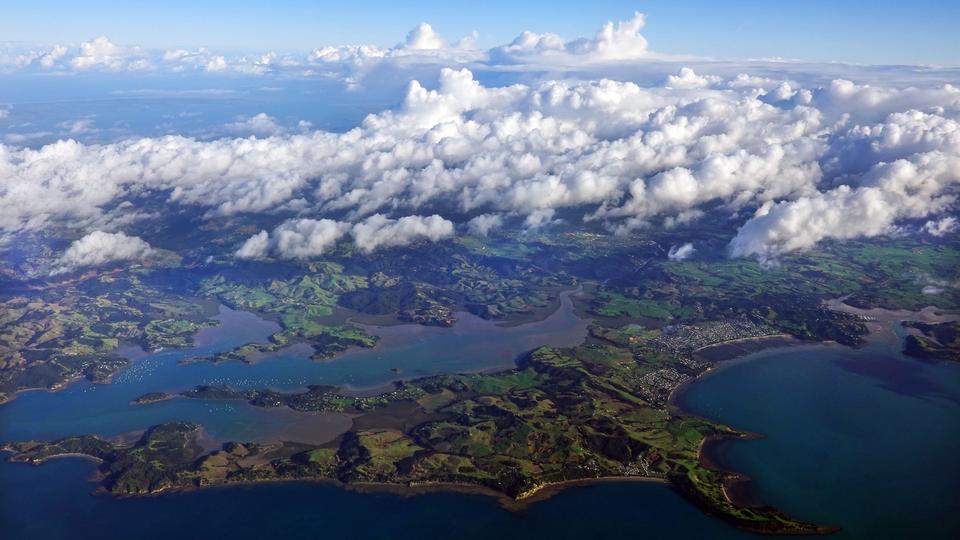
Rangi Parker 2
An aerial view of New Zealand on Wednesday, May 15, 2019. Photo by Ravell Call, courtesy of Church News. All rights reserved.A Special Work
It’s difficult for either Vic or Rangi Parker to pinpoint how their journey in becoming amateur historians all started. It evolved over many years from a myriad of influences. “It started in a small way,” Vic Parker said, adding it was like a snowball rolling down a hill, gathering momentum through the years.
Rangi Parker’s interest in the history of the missionaries in New Zealand began in the early 1970s, when she still had young children at home. Later, after her children were grown and her youngest son returned from his mission, she had more time to dedicate to the work.
She was assisted and encouraged in her efforts by many returned missionaries, including Elders Glen L. Rudd, Douglas J. Martin and Rulon G. Craven, all one-time General Authorities who served and loved the people of New Zealand.
The first missionary she ever interviewed was Elder Robert L. Simpson in 1986 in the office of Elder Rudd in the Church Office Building. “[Elder Simpson] gave the most beautiful interview,” Rangi Parker recalled of the late emeritus General Authority. “He spoke the Maori language.”
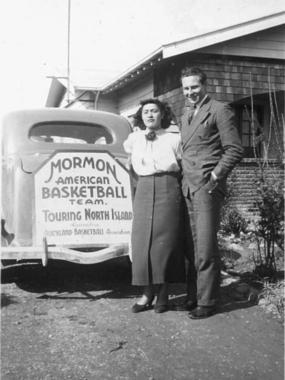
Rangi Parker 6
Robert L. Simpson stands next to the basketball touring vehicle, 1936-38. Photo courtesy of Rangi Parker, courtesy of Church News. All rights reserved.Elder Simpson had served under Matthew Cowley as a young missionary and later became a mission president and area president there.
Rangi Parker said she’s lost count of how many missionaries she’s interviewed, but in the last 35 years, she’s traveled to the United States 29 times, with her husband accompanying her 19 times. “I couldn’t have done what I have without Vic,” Rangi Parker said. “He’s been a constant source of support and encouragement.”
Since the beginning, she’s felt divine approbation as the Spirit has guided her to specific places and individuals. “When the Spirit guides, we go, and the most amazing things happen,” she said.
For example, she recalled going for a walk in Bountiful, Utah, on one of her many fact-finding trips to the United States and getting lost. She approached a woman on the street to ask for directions, and the woman, noticing the Kiwi accent, asked where she was from and why she was in Utah. After Rangi Parker explained she was collecting the histories of missionaries that had served in New Zealand, the woman said, “My great-grandfather served in New Zealand, and we have all this information at our house. Would you like to come and see?”
“That happened so many times,” Rangi Parker said. “I’ve learned over the years to listen to the Spirit.”
As a rule, Rangi Parker never asked to meet with anyone. “I’d explain what I was doing and wait to be invited,” she said. She would call one returned missionary, an Elder Johnson, every year when she made the 7,000-plus mile trip from New Zealand. After five years and five phone calls, she had the feeling to “ring Elder Johnson” again.
“I rang him up after leaving the Church Office Building and he said, ‘Hello, Sister Parker. You’re quite a persistent lady, aren’t you? Would you like to come and see me? I’m in Brigham City.’ I was so thrilled,” Rangi Parker recalled.
When she came to his home, Elder Johnson, who was then 84 years old, went down the stairs and came back with 14 8mm films. “In those films was my mother. She was standing on the marae (Maori meeting place) with my two aunties. It was absolutely incredible,” Rangi Parker said.
The Untold History of Aotearoa
Rangi Parker’s mother was an accomplished singer and would travel the country singing at all the Church conferences. She remembers asking, “Mum, where are the photographs of you singing at conferences?” And she said, “We didn’t have cameras; the missionaries were the only ones with the cameras.”
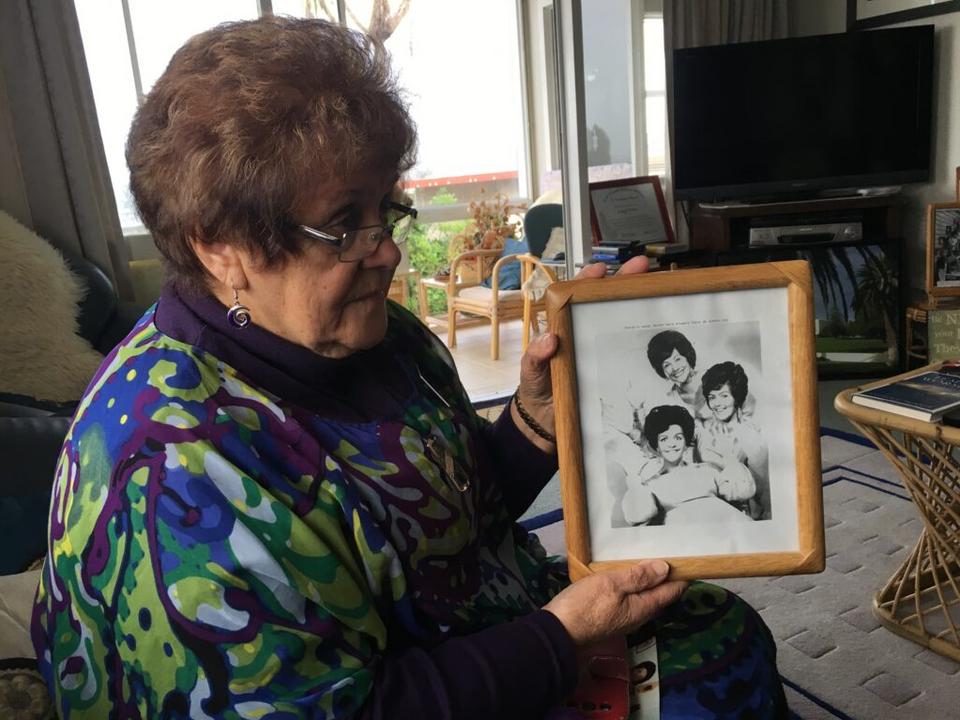
Rangi Parker 8
In her home in Temple View, New Zealand, Rangi Parker holds a photo. Photo by Rachel Sterzer Gibson, courtesy of Church News. All rights reserved.Missionaries from The Church of Jesus Christ of Latter-day Saints first arrived in Aotearoa (New Zealand) in 1854. These missionaries lived with the Maori people in their homes, ate with them, learned to speak their language, taught them and blessed them. They gained a great love for the people and the land.
Rangi Parker soon found as she spoke with past missionaries that not only had they taken photos and recorded videos, but their journals recorded names and experiences of people. “It was absolutely amazing the history they kept,” Rangi Parker said. “They were taking photographs of families from all over New Zealand, so we have a history of tribal areas that nobody else took. History that missionaries captured.”
Wayne Crosby, the Church History Department’s director of global support and acquisitions, said that part of what makes collections like the Kia Ngawari Trust valuable is that they were collected during the time before the Church had a decentralized approach for gathering records. “Had they not been collected by private individuals, many would have most likely been lost forever,” he said.
One of the joys of the work, Rangi Parker said, has been sharing history — a photograph, a journal entry or even a recording — of someone’s ancestors, something she has felt the impact of personally.
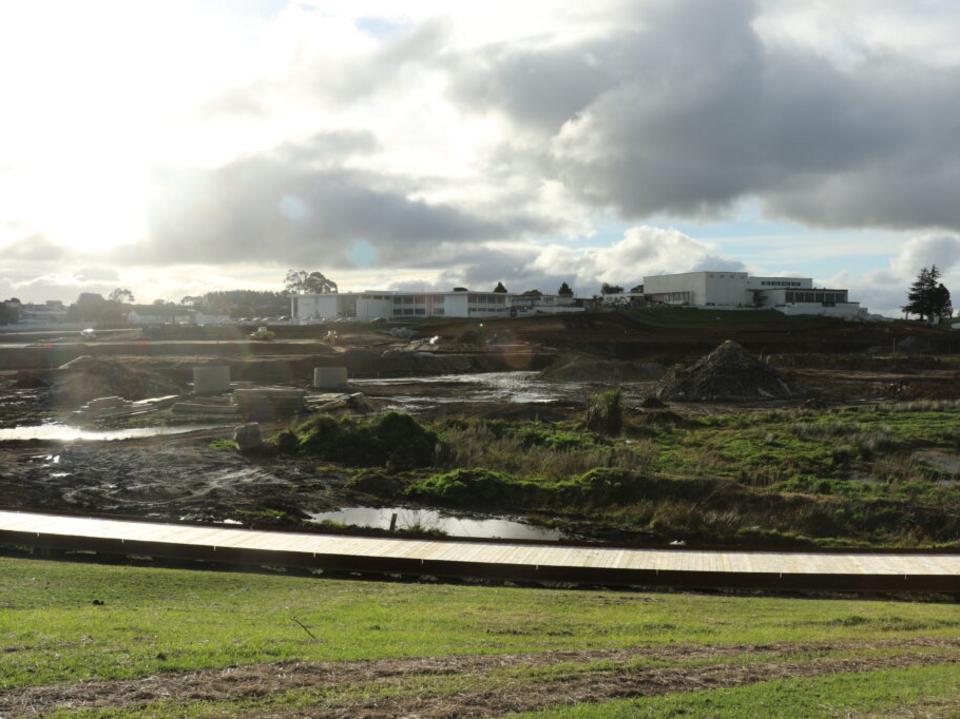
National Treasure 2
Scene includes several new and renovated buildings in Temple View, New Zealand, dedicated by President Henry B. Eyring on Saturday, June 17, 2017. Photo by Rachel Sterzer, courtesy of Church News. All rights reserved.Once when she was doing a presentation at Education Week at the old Church College of New Zealand, she put a photograph up on the screen and told the audience, “We’re trying to find out who these people are.”
An old woman in a wheelchair at the back of the classroom with tears on her face said, “That’s my wedding photo. I have never seen a photo of my wedding.”
In 1990, Rangi Parker was interviewing a missionary, Dick Lambert, at his home in Sandy, Utah. She asked to see his photo album, and as she opened it up there was a photo of her mother.
“Tell me about this lady,” she told Lambert. He said her name was Tilly, and she had the most beautiful alto voice. “I can close my eyes now and hear Tilly singing,” he said.
With tears in her eyes, Rangi Parker said, “Tilly is my mother. If I’ve come all the way to America to find this photo, it’s been worth it.”
A Special Place
Instead of being tucked away in a forgotten box in a basement or attic somewhere across a vast ocean, because of Rangi Parker and the many people who helped her, the records and materials were brought home to New Zealand.
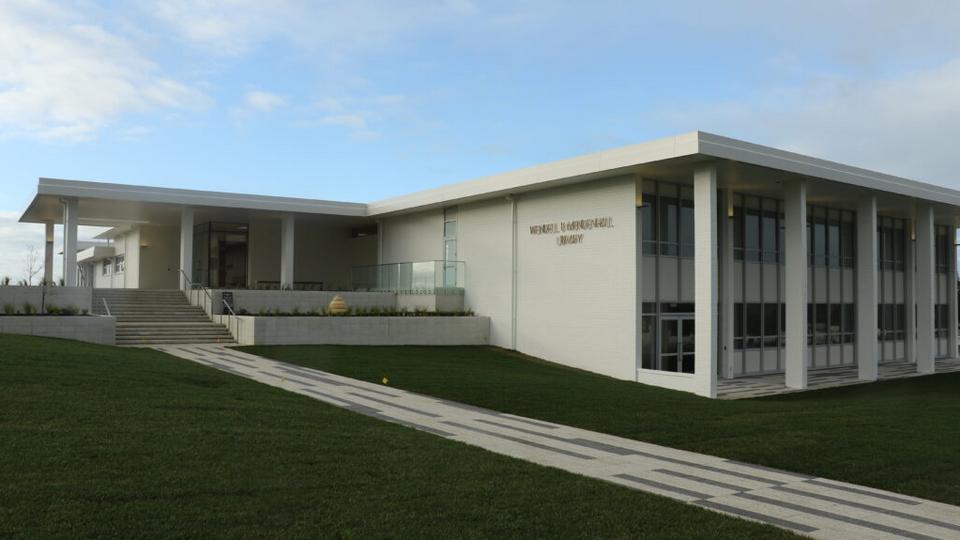
Rangi Parker 9
The newly renovated Mendenhall Library is part of the Temple View development project dedicated by President Henry B. Eyring on Saturday, June 17, in Hamilton, New Zealand. The library will now house the Matthew Cowley Pacific Church History Center and Museum in addition to a distribution center, records preservation center, mission offices and self-reliance center. Photo by Rachel Sterzer, courtesy of Church News. All rights reserved.The collection started as a few boxes in the Parkers’ basement, then took over a wardrobe, then filled a few rooms in the Parkers’ home. Eventually, they moved it to the basement of the Hamilton temple visitors’ center, then across the street to an empty missionary apartment. Finally, in 2017, it found its permanent home as the Church renovated and refurbished many of the buildings found on the Church College of New Zealand campus, which closed in 2009. The old Mendenhall Library — a vital component of the old college campus — became the Matthew Cowley Pacific Church History Center and Museum.
The center is named for Elder Matthew Cowley, who arrived in New Zealand as a young missionary in 1914. He served there again as a mission president and then again after being called as a member of the Quorum of the Twelve Apostles. He was fluent in the Maori language and was affectionately known as the “Polynesian Apostle.”
Kia Ngawari, for which the trust is named, was Matthew Cowley’s signature phrase for the people of Aotearoa. It means: “be loving, be gentle, be kind.” “It was the expression of Christlike love. It encapsulates the people there. They understand how to love,” said Sister Eva Garlick, a Church history specialist and wife of Elder Garlick, the center’s director.
“That’s been our sign for more than 30 years: Kia Ngawari,” Rangi Parker said.
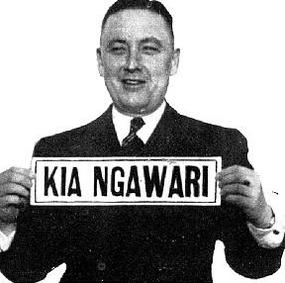
Rangi Parker 5
Matthew Cowley poses with his sign that reads, “Kia Ngawari.” Photo courtesy of Church News. All rights reserved.The National Turnbull Library of New Zealand came to Rangi and Vic Parker five times to ask for the collection. During those periods, Rangi Parker said she would have a strong feeling of “No. Wait.” Now it is housed in a state-of-the-art Church History Center at the foot of the Hamilton temple and has been mostly cataloged, digitized and indexed.
“We’re just thrilled that it can be shared,” Vic Parker said. “That’s what it’s all about: sharing the history and spiritual experiences with the people, members and nonmembers who want to find their roots.”
A Typical ‘Rangi Experience’
From his office in the Matthew Cowley center, Elder Garlick will hear when someone comes into the center and soon Rangi is asking “Where are you from?”
“Rangi is great at her computer and she can pull up photographs and video clips on her computer to show people,” Elder Garlick said.
The next thing you know, Rangi Parker, who was a professional singer for many years, will begin to sing a song about New Zealand. “Inevitably, it brings tears to everyone’s eyes,” Elder Garlick said. “It’s like the place fills with the Spirit because of Rangi and Vic. They are the catalyst that brings the Spirit into this place.”
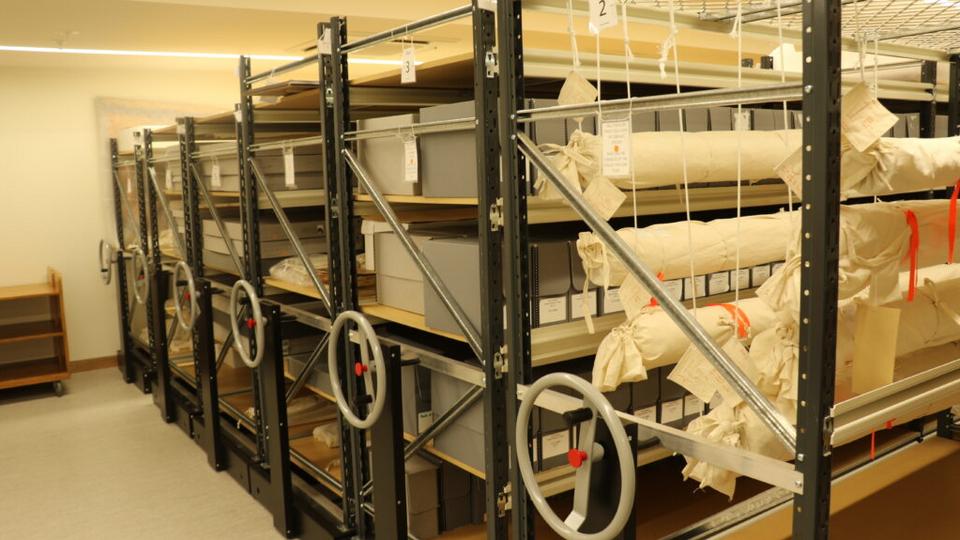
When Elder Garlick first arrived at the center, Rangi Parker shared an old Maori proverb with him: He aha te me nui o te ao. He tangata, He tangata, He tangata. “What is the most important thing in the world? It is people. It is people. It is people.”
“I think she epitomizes this proverb,” Elder Garlick said.
Of her own efforts, Rangi Parker said simply, “It’s the Lord’s work, sweetheart. We’re just instruments here.”
Before the center was even open, a young workman, who was not a member, was installing a large television in the office. Rangi Parker asked him where he was from and his family name. She was then able to bring up photos he had never seen before of some of his ancestors. “He was thrilled,” Rangi Parker recalled, and he promised to return and bring his mother.
And now, three years later, the Parkers’ work continues to connect individuals with their ancestors. Before the New Zealand Missionary Training Center was closed because of the spread of COVID-19, the offices for the Hamilton mission office were located at the Matthew Cowley center. There was an elder there who stuttered. When Rangi Parker met him, she pulled up a picture of his great-grandfather, who had served in New Zealand and, come to find out, also had a stutter. “It turned out to be a blessing and comfort to [this elder] to sort of meet this great-grandfather who also had this same problem,” Sister Garlick said.
Rangi Parker said she has seen how the collection is a blessing to young people and less-active members. “They come, and we show them photos of their ancestors they have never seen before and read stories from the missionaries’ journals, and we see tears in their eyes as they’re connecting with those who have gone beyond the veil. It’s just amazing,” she said.
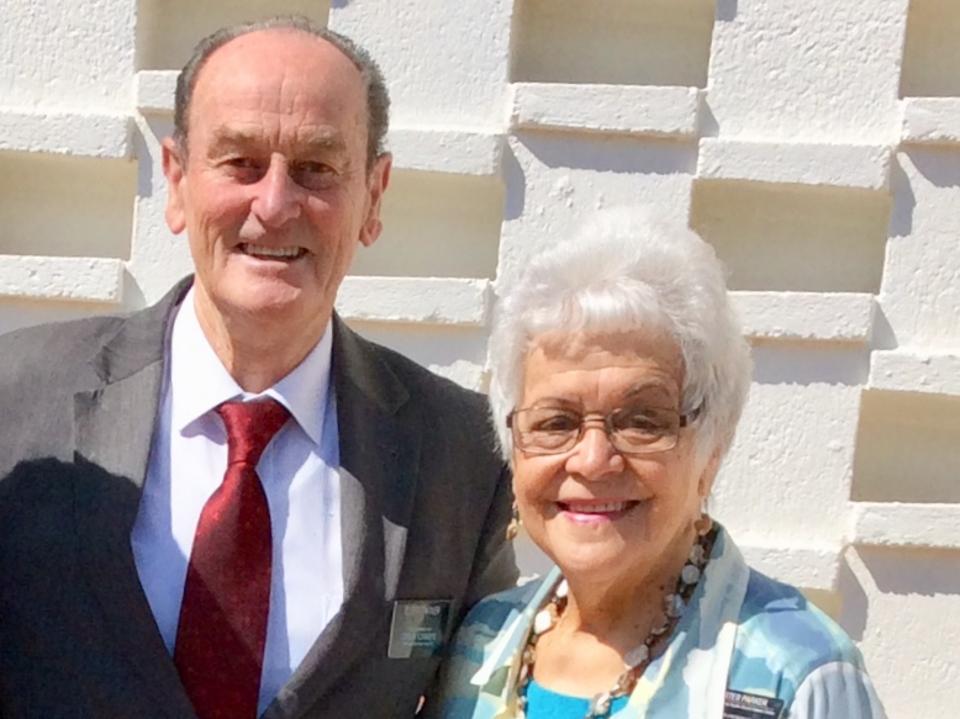
Rangi Parker 4
Elder Vic Parker and Sister Rangi Parker pose for a photo outside the Matthew Cowley Pacific Church History Center in Temple View, New Zealand. Photo courtesy of Rangi Parker, courtesy of Church News. All rights reserved.Copyright 2020 Deseret News Publishing Company